Best Multimodal Models for Smarter, More Creative AI Systems
Published on Jun 17, 2025
Get Started
Fast, scalable, pay-per-token APIs for the top frontier models like DeepSeek V3 and Llama 3.3. Fully OpenAI-compatible. Set up in minutes. Scale forever.
In today’s world of artificial intelligence, researchers are constantly looking for ways to develop more efficient models that can solve real-world problems. Multimodal models, which analyze data across multiple modalities, such as text, images, and audio, pave the way for more intelligent AI that can mimic human-like understanding by processing and correlating information across different data types. Suppose you want to achieve faster, smarter, and more efficient AI development that drives innovation and real-world impact, particularly in creative applications. In that case, this article will offer valuable insights into the best multimodal models for machine learning frameworks currently available.
One way to boost your AI development is to utilize Inference's AI inference APIs. These solutions can help you achieve your objectives faster and more easily so you can focus on innovating and creating real-world impact.
What are Multimodal Models?
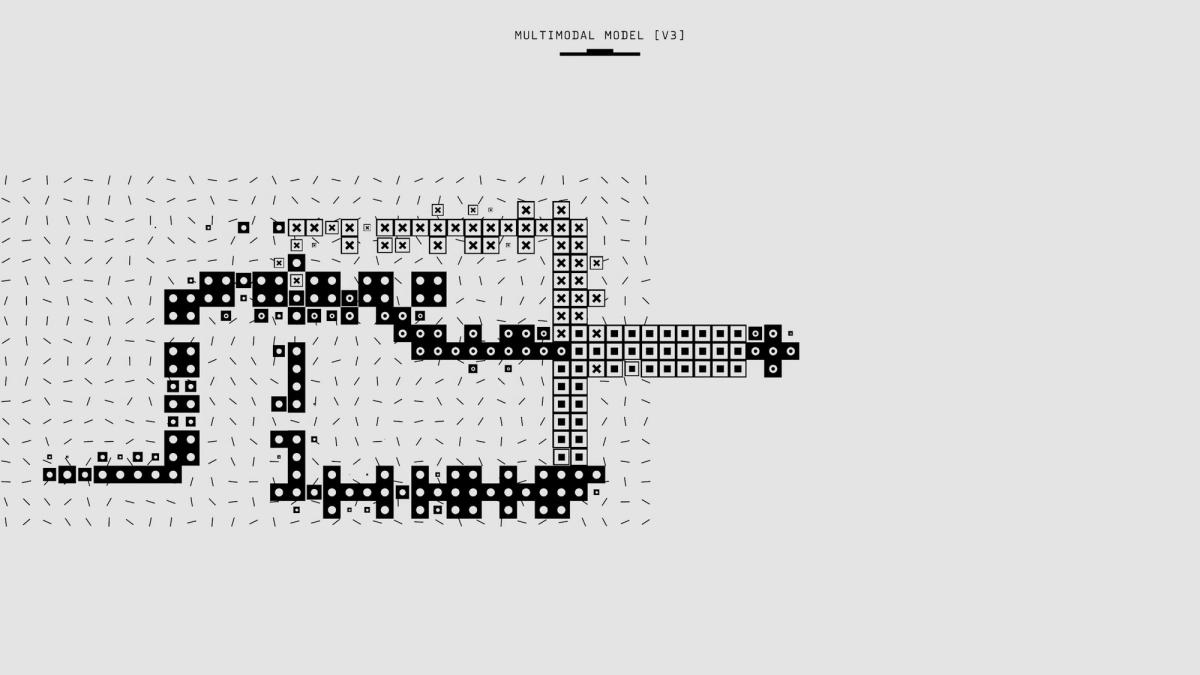
Multimodal models are advanced AI systems that leverage deep learning to process and integrate multiple data modalities simultaneously, such as:
- Text
- Audio
- Video
- Images
These models enable a more context-rich and accurate understanding by combining information from diverse sources. Unlike unimodal models, which rely on traditional machine learning to process a single data type at a time (e.g., YOLO for visual data), multimodal frameworks deliver higher accuracy and an improved user experience.
Their versatility makes them valuable across industries, from autonomous mobile robots in manufacturing that fuse sensor data for object localization to healthcare applications that combine medical imaging and patient records for more precise diagnoses.
How Multimodal Models Work
Although multimodal models have varied architectures, most frameworks have a few standard components. A typical architecture includes:
- An Encoder
- A fusion mechanism
- A decoder
Encoders Transform Raw Multimodal Data Into Machine-Readable Inputs
Encoders transform raw multimodal data into machine-readable feature vectors or embeddings that models use as input to understand the data’s content. Multimodal models often have three types of encoders for each data type:
- Image
- Text
- Audio
Modality-Specific Encoders in Multimodal AI Systems
- Image Encoders: Convolutional neural networks (CNNs) are popular for image encoders. CNNs can convert image pixels into feature vectors to help the model understand critical image properties.
- Text Encoders: Text encoders transform text descriptions into embeddings that models can use for further processing. They often use transformer models like those in Generative Pre-Trained Transformer (GPT) frameworks.
- Audio Encoders: Wav2Vec2 is a popular choice for learning audio representations. Audio encoders convert raw audio files into usable feature vectors that capture critical audio patterns, including:
- Rhythm
- Tone
- Context
Fusion Mechanisms Combine Multiple Input Modalities
Once the encoders transform multiple modalities into embeddings, the next step is to combine them so the model can understand the broader context reflected in all data types. Developers can use various fusion strategies according to the use case.
The list below mentions key fusion strategies.
- Early Fusion: Combines all modalities before passing them to the model for processing.
- Intermediate Fusion: Projects each modality onto a latent space and fuses the latent representations for further processing.
- Late Fusion: Processes all modalities in their raw form and fuses the output for each.
- Hybrid Fusion: Combines early, intermediate, and late fusion strategies at different model processing phases.
Methods of Fusing Modalities
While the list above mentions the high-level fusion strategies, developers can use multiple methods within each strategy to fuse the relevant modalities.
Attention-based Methods
Attention-based methods, built on the transformer architecture, convert embeddings from multiple modalities into a query-key-value format for context-aware processing. Introduced in the landmark 2017 paper “Attention Is All You Need,” this technique was initially developed to enhance language models by enabling longer context windows. Today, attention mechanisms are widely applied across domains such as computer vision and generative AI.
These methods allow models to capture relationships between different embeddings, facilitating more accurate interpretation of multimodal data. Cross-modal attention enables models to align and integrate inputs from various modalities. For example, identifying which text prompt elements correspond to specific visual features in an image, resulting in more effective data fusion.
Concatenation
Concatenation is a straightforward fusion technique that merges multiple embeddings into a single feature representation. For instance, the method will concatenate a textual embedding with a visual feature vector to generate a consolidated multimodal feature. The technique helps in intermediate fusion strategies by combining the latent representations for each modality.
Dot-Product
The dot-product method involves element-wise multiplication of feature vectors from different modalities. It helps capture the interactions and correlations between modalities, assisting models in understanding the commonalities among different data types. It only helps in cases where the feature vectors do not suffer from high dimensionality.
Taking dot-products of high-dimensional vectors may require extensive computational power and result in features that only capture common patterns between modalities, disregarding critical nuances.
Decoders Generate Output From Combined Features
The last component is a decoder network that processes the feature vectors from different modalities to produce the required output. Decoders can contain cross-modal attention networks to focus on other parts of the input data and produce relevant outputs.
For instance, translation models often use cross-attention techniques to simultaneously understand the meanings of sentences in different languages. Recurrent neural network (RNN), Convolutional Neural Networks (CNN), and Generative Adversarial Network (GAN) frameworks are popular choices for constructing decoders to perform tasks involving:
- Sequential
- Visual
- Generative processes
Multimodal Models - Use Cases
With recent advancements in multimodal models, AI systems can perform complex tasks involving the simultaneous integration and interpretation of multiple modalities. The capabilities allow users to implement AI in large-scale environments with extensive and diverse data sources requiring robust processing pipelines.
The list below mentions a few of these tasks that multimodal models perform efficiently.
Visual Question-Answering (VQA)
VQA involves a model answering user queries regarding visual content. For instance, a healthcare professional may ask a multimodal model regarding the content of an X-ray scan. By combining visual and textual prompts, multimodal models provide relevant and accurate responses to help users perform VQA.
Image-to-Text and Text-to-Image Search
Multimodal models help users build powerful search engines that can type natural language queries to search for particular images. They can also build systems that retrieve relevant documents in response to image-based queries. For instance, a user may give an image as input to prompt the system to search for relevant blogs and articles containing the image.
Generative AI
Generative AI models help users with text and image generation tasks that require multimodal capabilities. For instance, multimodal models can help users with image captioning, where they ask the model to generate relevant labels for a particular image. They can also use these models for natural language processing (NLP) use cases that involve generating textual descriptions based on:
- Video
- Image
- Audio data
Image Segmentation
Image segmentation involves dividing an image into regions to distinguish between different elements within an image. Multimodal models can help users perform segmentation more quickly by segmenting areas automatically based on textual prompts. For instance, users can ask the model to segment and label items in the image’s background.
Related Reading
16 Best Multimodal Models for Advanced AI Development
1. Inference

Inference delivers OpenAI-compatible serverless inference APIs for top open-source LLM models, offering developers the highest performance at the lowest cost in the market. Beyond standard inference, Inference provides specialized batch processing for large-scale async AI workloads and document extraction capabilities designed explicitly for RAG applications.
Start building with $10 in free API credits and experience state-of-the-art language models that balance cost-efficiency with high performance.
2. Llama 3.2 90B
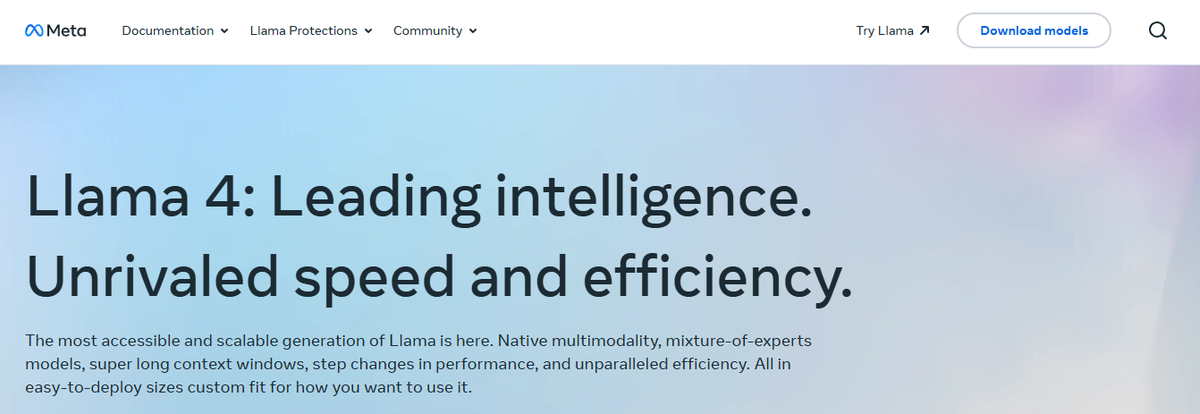
Meta AI’s Llama 3.2 90B is one of the most advanced and popular multimodal models. This latest variant of the Llama series combines instruction-following capabilities with advanced image interpretation, catering to a wide range of user needs.
The model is built to facilitate tasks requiring understanding and generating responses based on multimodal inputs.
Features
- Instruction Following: Designed to handle complex user instructions involving text and images.
- High Efficiency: Capable of processing large datasets quickly, enhancing its utility in dynamic environments.
- Robust Multimodal Interaction: Integrates text and visual data to provide comprehensive responses.
3. Gemini 1.5 Flash
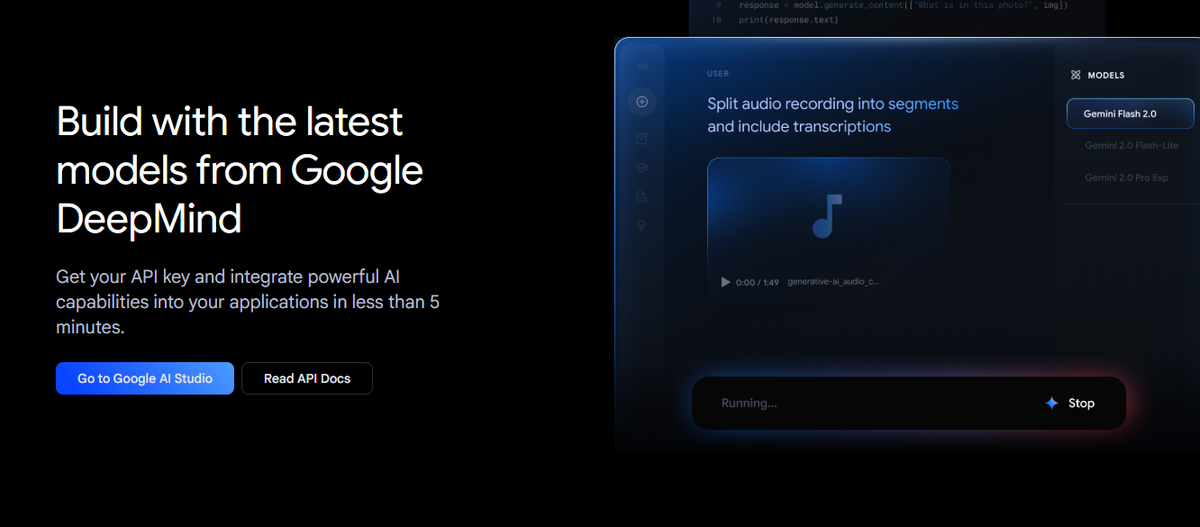
Gemini 1.5 Flash is Google’s latest lightweight multimodal model. It is adept at processing text, images, video, and audio quickly and efficiently. Its ability to provide comprehensive insights across different data formats makes it suitable for applications that require a deeper understanding of context.
Features
- Multimedia Processing: Handles multiple data types simultaneously, allowing for enriched interactions.
- Conversational Intelligence: Particularly effective in multi-turn dialogues, context from previous interactions is vital.
- Dynamic Response Generation: Generates responses that reflect an understanding of various media inputs.
4. Florence 2

Florence 2 is a lightweight model from Microsoft designed primarily for computer vision tasks while integrating textual inputs. Its capabilities enable it to perform complex analyses on visual content, making it invaluable for vision-language applications such as:
- OCR
- Captioning
- Object detection
- Instance segmentation, etc.
Features
- Strong Visual Recognition: Excels at identifying and categorizing visual content, providing detailed insights.
- Complex Query Processing: Handles user queries that combine both text and images effectively.
5. GPT-4o

GPT-4o is an optimized version of GPT-4, designed for efficiency and performance in processing both text and images. Its architecture allows quick responses and high-quality outputs, making it a preferred choice for various applications.
Features
- Optimized Performance: Faster processing speeds without sacrificing output quality, suitable for real-time applications.
- Multimodal Capabilities: Effectively handles various queries involving textual and visual data.
6. Claude 3.5
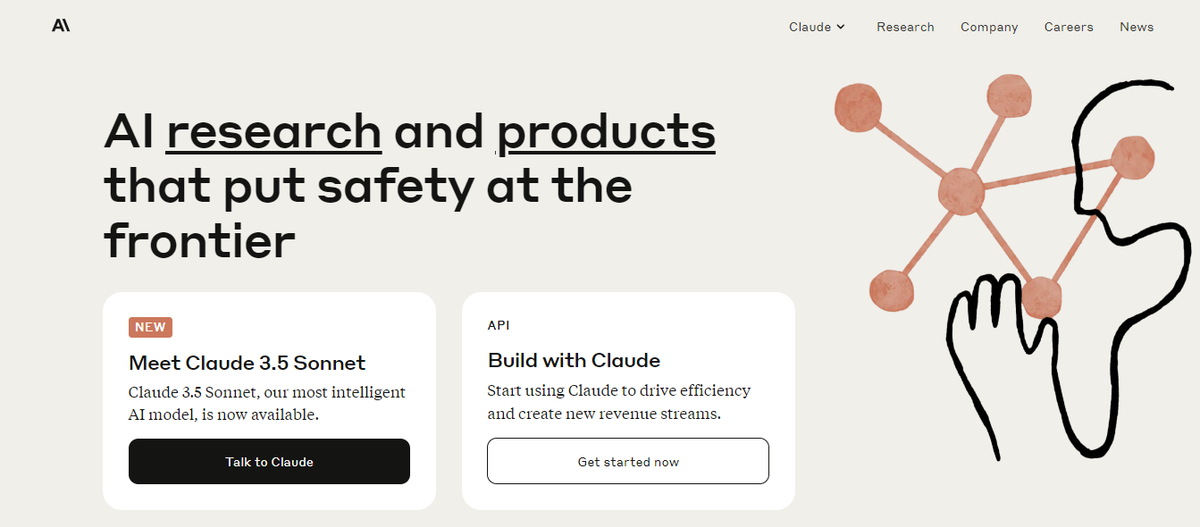
Claude 3.5 is a multimodal model developed by Anthropic, focusing on ethical AI and safe interactions. This model combines text and image processing while prioritizing user safety and satisfaction.
It is available in three sizes:
- Haiku
- Sonnet
- Opus
Features
- Safety Protocols: Designed to minimize harmful outputs, ensuring that interactions remain constructive.
- Human-Like Interaction Quality: Emphasizes creating natural, engaging responses, making it suitable for a broad audience.
- Multimodal Understanding: Effectively integrates text and images to provide comprehensive answers.
7. LLaVA V1.5 7B
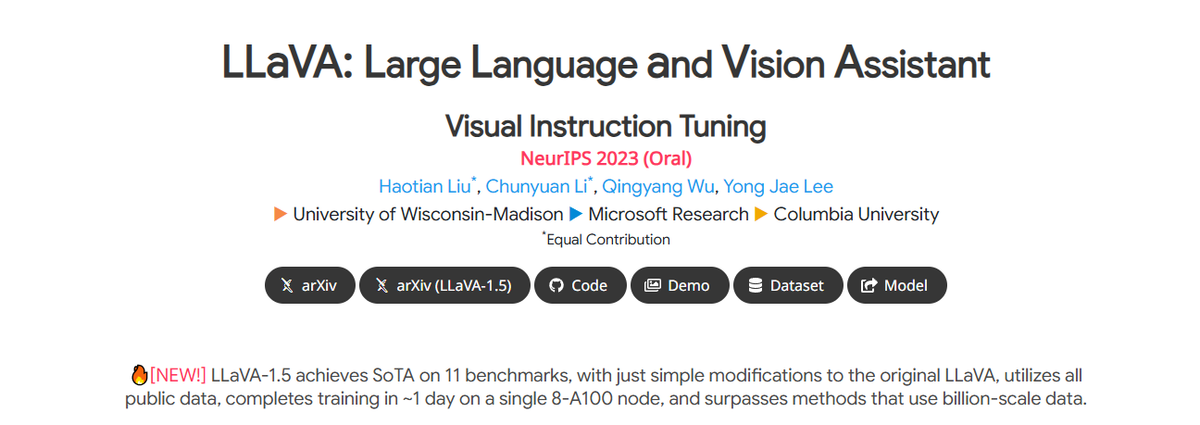
LLaVA (Large Language and Vision Assistant) is a fine-tuned model. It uses visual instruction tuning to support image-based natural instruction following and visual reasoning capabilities. Its small size makes it suitable for interactive applications, such as chatbots or virtual assistants, requiring real-time user engagement.
Its strengths lie simultaneously in processing:
- Text
- Audio
- Images
Features
- Real-Time Interaction: Provides immediate responses to user queries, making conversations more natural.
- Contextual Awareness: Better understanding of user intents that combine various data types.
- Visual Question Answering: Identifies text in images through Optical Character Recognition (OCR) and answers questions based on image content.
8. DALL·E 3
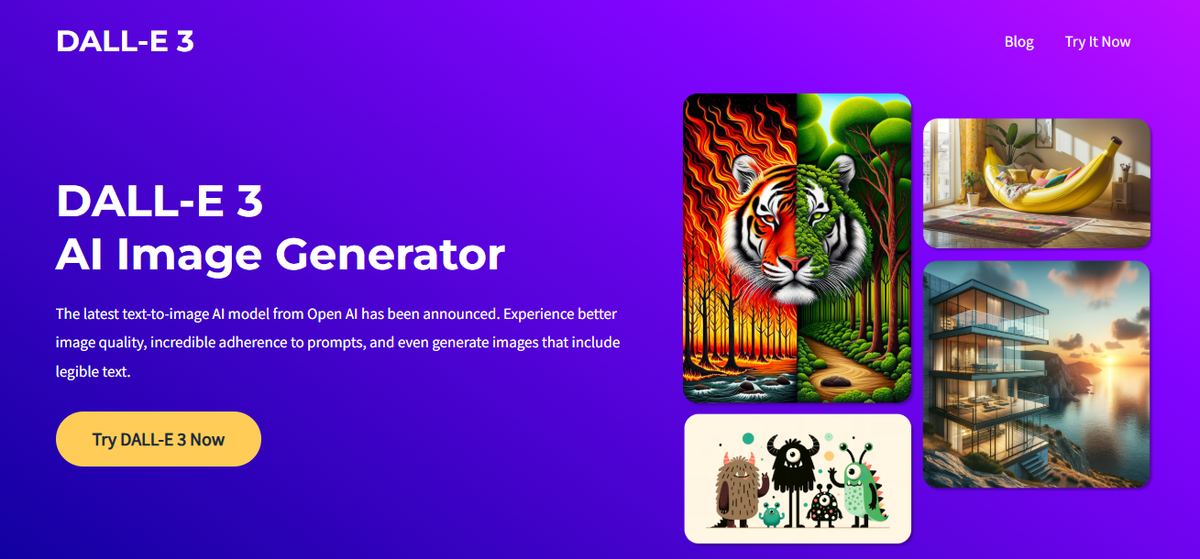
Open AI’s DALL·E 3 is a powerful image generation model that translates textual descriptions into vivid, detailed images. This model is renowned for its creativity and ability to understand nuanced prompts, enabling users to generate images that closely match their imagination.
Features
- Text-to-Image Generation: Converts detailed prompts into unique images, allowing for extensive creative possibilities.
- Inpainting Functionality: Users can modify existing images by describing text changes, offering flexibility in image editing.
- Advanced Language Comprehension: It better understands context and subtleties in language, resulting in more accurate visual representations.
9. CLIP
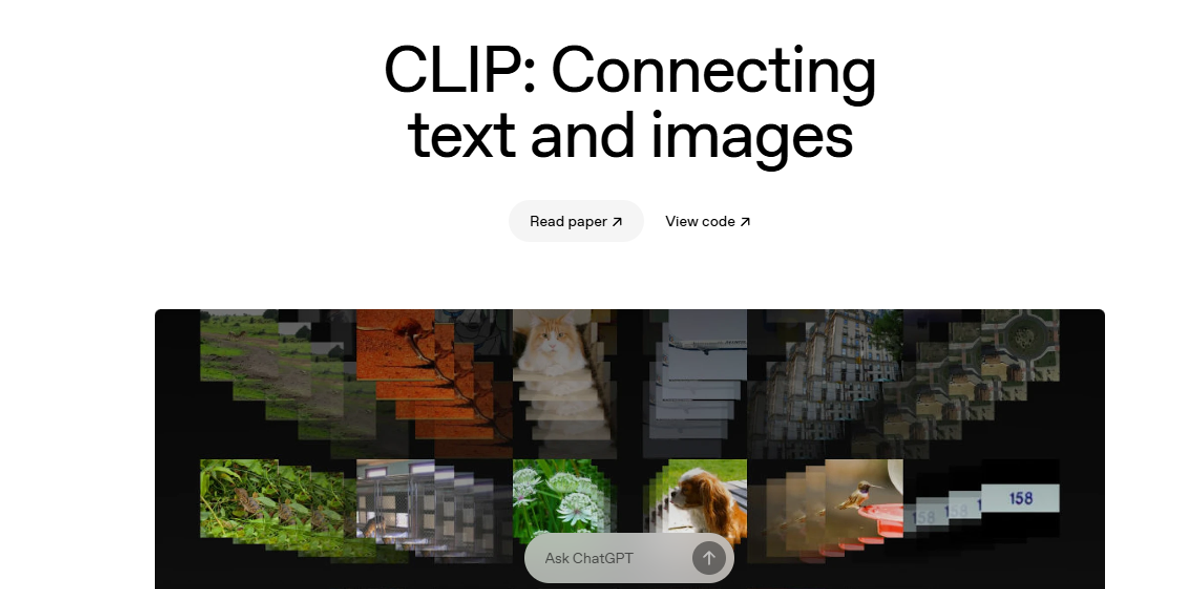
Contrastive Language-Image Pre-training (CLIP) is a multimodal vision-language model by OpenAI that performs image classification tasks. It pairs descriptions from textual datasets with corresponding images to generate relevant image labels.
Key Features
- Contrastive Framework: CLIP uses the contrastive loss function to optimize its learning objective. The approach minimizes a distance function by associating relevant text descriptions with related images to help the model understand which text best describes an image’s content.
- Text and Image Encoders: The architecture uses a transformer-based text encoder and a Vision Transformer (ViT) as an image encoder.
- Zero-shot Capability: Once CLIP learns to associate text with images, it can quickly generalize to new data and generate relevant captions for new unseen images without task-specific fine-tuning.
10. CogVLM

Cognitive Visual Language Model (CogVLM) is an open-source visual language foundation model that uses deep fusion techniques to achieve superior vision and language understanding. The model performs SOTA on seventeen cross-modal benchmarks, including image captioning and VQA datasets.
Key Features
- Attention-based Fusion: The model uses a visual expert module that includes attention layers to fuse text and image embeddings. This technique helps retain the LLM’s performance by keeping its layers frozen.
- ViT Encoder: It uses EVA2-CLIP-E as the visual encoder and a multi-layer perceptron (MLP) adapter to map visual features onto the same space as text features.
- Pre-trained Large Language Model (LLM): CogVLM 17B uses Vicuna 1.5-7B as the LLM for transforming textual features into word embeddings.
11. Gen2
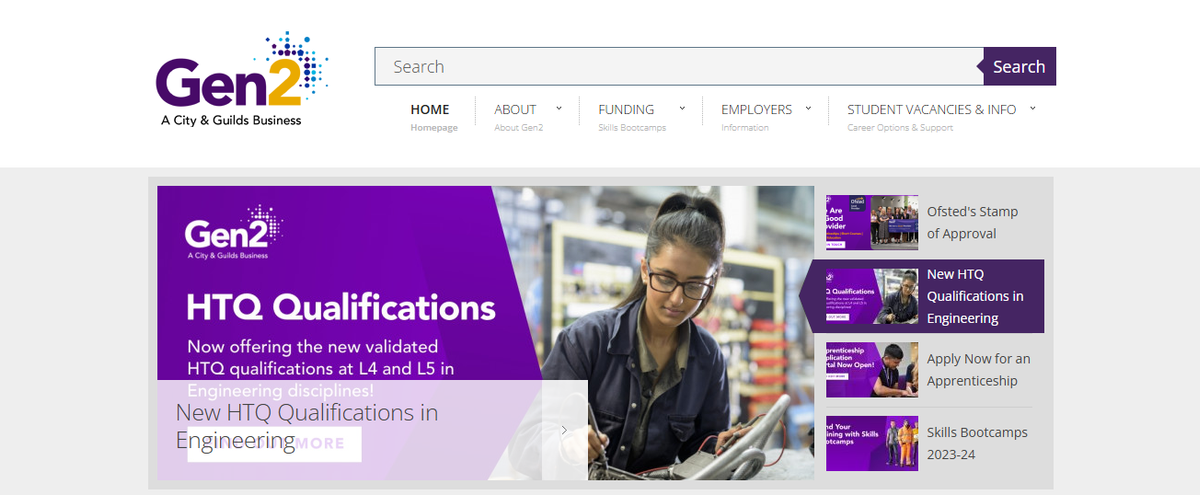
Gen2 is a powerful text-to-video and image-to-video model that can generate realistic videos based on textual and visual prompts. It uses diffusion-based models to create context-aware videos using image and text samples as guides.
Key Features
- Encoder: Gen2 uses an autoencoder to map input video frames onto a latent space and diffuse them into low-dimensional vectors.
- Structure and Content: It uses MiDaS, an ML model that estimates the depth of input video frames. It also uses CLIP for image representations by encoding video frames to understand content.
- Cross-Attention: The model uses a cross-modal attention mechanism to merge the diffused vector with the content and structure representations derived from MiDaS and CLIP. It then performs the reverse diffusion process conditioned on content and structure to generate videos.
12. ImageBind
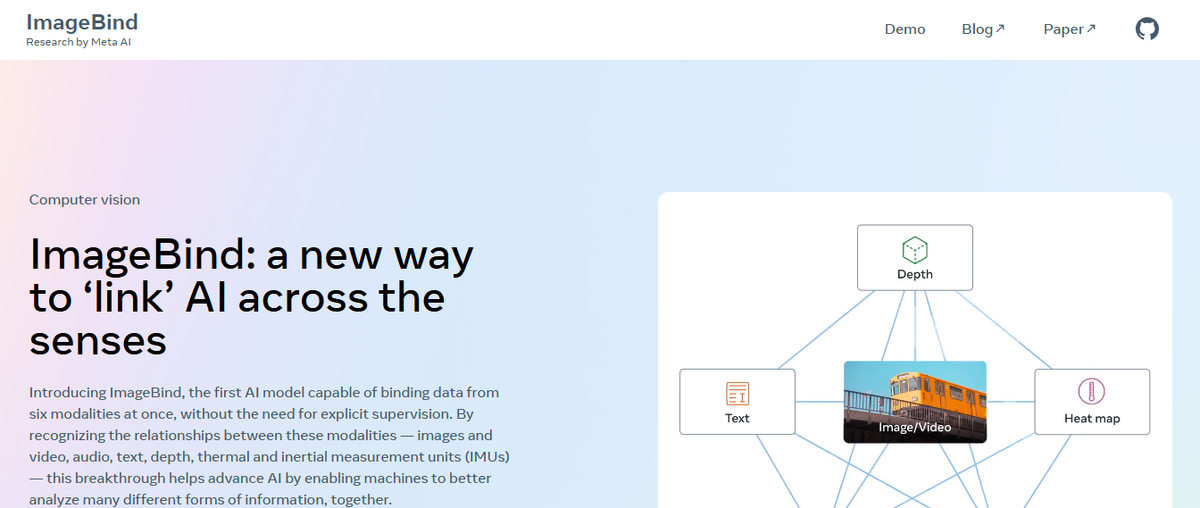
ImageBind is a multimodal model by Meta AI that can combine data from six modalities, including text, video, audio, depth, thermal, and inertial measurement unit (IMU), into a single embedding space. It can then use any modality as input to generate output in any of the mentioned modalities.
Key Features
- Output: ImageBind generates corresponding images by supporting
- Audio-to-image
- Image-to-audio
- Text-to-image and audio
- Audio and image-to-image
- Audio
- Image Binding: The model pairs image data with other modalities to train the network. For instance, it finds relevant textual descriptions related to specific images and pairs videos from the web with similar images.
- Optimization Loss: It uses the InfoNCE loss, where NCE stands for noise-contrastive estimation. The loss function uses contrastive approaches to align non-image modalities with specific images.
13. Flamingo

Flamingo is a vision-language model by DeepMind that can take videos, images, and text as input and generate textual responses regarding the photo or video. The model allows for few-shot learning, where users provide a few samples to prompt the model to create relevant responses.
Key Features
- Encoders: The model consists of a frozen pre-trained Normalizer-Free ResNet as the vision encoder trained on the contrastive objective. The encoder transforms image and video pixels into 1-dimensional feature vectors.
- Perceiver Resampler: The perceiver resampler generates a small number of visual tokens for every image and video. This method helps reduce computational complexity in photos and videos with an extensive feature set.
- Cross-Attention Layers: Flamingo incorporates cross-attention layers between the layers of the frozen LLM to fuse visual and textual features.
14. Gemini
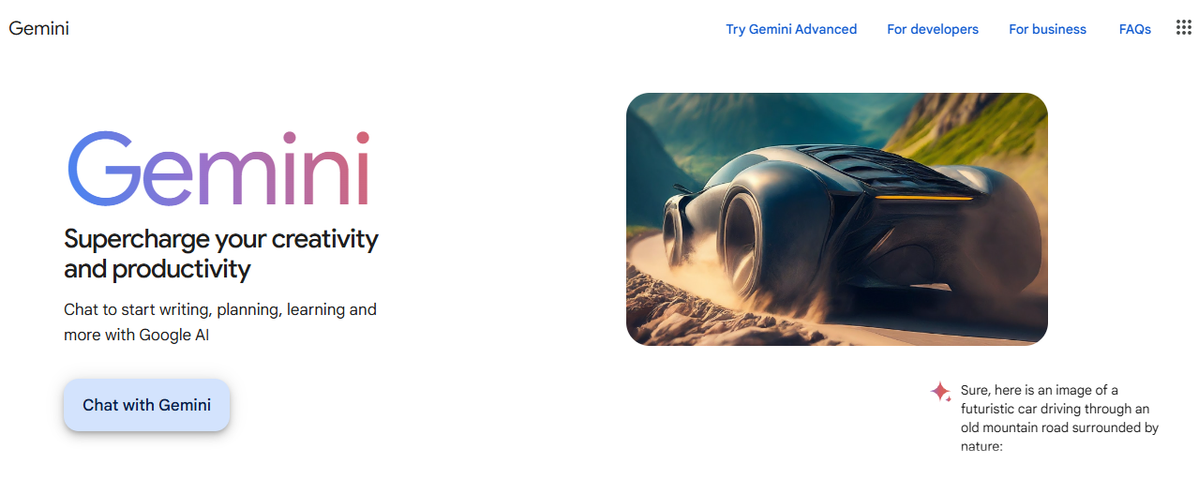
Google Gemini is a set of multimodal models that can process audio, video, text, and image data.
It offers Gemini in three variants:
- Ultra for complex tasks,
- Pro for large-scale deployment
- Nano for on-device implementation
Key Features
- Larger Context Window: The latest Gemini versions, 1.5 Pro and 1.5 Flash, have long context windows, which allow them to process long-form videos, text, code, and words. For instance, Gemini 1.5 Pro supports up to two million tokens, and 1.5 Flash supports up to one million.
- Transformer-based Architecture: Google trained the model on interleaved text, image, video, and audio sequences using a transformer. Using the multimodal input, the model generates images and text as output.
- Post-training: The model uses supervised fine-tuning and reinforcement learning with human feedback (RLHF) to improve response quality and safety.
15. Aria

The recently introduced Aria AI model from Rhymes AI is touted as the world’s first open source, multimodal native mixture-of-experts (MoE) model, all within one architecture, that can process:
- Text
- Code
- Images
- Video
This versatile model is relatively powerful compared to even larger models, yet is more efficient, as it selectively leverages relevant subsets (or “mini-experts”) of its framework, depending on the task. Its architecture is designed for ease of scalability, as new “experts” could be added to address new tasks without straining the system. Aria excels at long multimodal input understanding, meaning it quickly and accurately parses long documents and videos.
16. xGen-MM

BLIP-3, developed by Salesforce, is a cutting-edge, open-source suite of multimodal models featuring several variants:
- A base pretrained model
- An instruction-tuned version
- A safety-tuned model designed to minimize harmful outputs
A significant advancement lies in its training approach, leveraging a massive, trillion-token open-source dataset of interleaved image and text data, which researchers describe as the most natural form of multimodal input. This enables BLIP-3 to effectively process inputs combining text with multiple images, making it highly adaptable across domains such as:
- Autonomous driving
- Medical diagnostics
- Interactive education
- Marketing
Key Highlights
- Multiple Model Variants: Includes base, instruction-tuned, and safety-tuned options for varied use cases.
- Safety-Tuned Design: Aims to reduce the risk of generating harmful or inappropriate outputs.
- Trillion-Token Multimodal Dataset: Trained on interleaved image-text data, optimizing real-world applicability.
- Enhanced Multimodal Understanding: Excels at interpreting and reasoning over combined text and multi-image inputs.
- Wide-Ranging Applications: Suitable for use in healthcare, autonomous systems, education, and marketing.
17. NExT-GPT: A New Frontier in Multimodal LLMs
Developed by the University of Singapore, NExT-GPT is labelled as an “end-to-end general-purpose any-to-any MM-LLM system,” meaning it can produce outputs in combinations of text, images, audio, and video and process them as inputs.
NExT-GPT's Multi-Modal Encoding Prowess
NExT-GPT was created by connecting Meta’s ImageBind as an encoder that allowed it to process six modalities with an LLM (Vicuna, as with LLaVA). From there, the LLM passes its output to a different diffusion decoder for each modality, fusing the outputs from each decoder to produce the final result.
Key Features and Capabilities
- Capable of both receiving input and generating output in any combination of text, image, audio, and video modalities.
- Components include Vicuna LLM and Meta’s ImageBind.
- Utilizes existing diffusion models for each modal generation:
- Stable Diffusion for images
- AudioLDM for audio
- Zeroscope for video
18. Inworld AI: Crafting Life-Like Virtual Characters
Inworld AI stands apart from the other models on this list as an engine for creating AI-driven virtual characters. In addition to enabling the creation of more realistic non-playable characters (NPCs), Inworld can imbue virtual tutors, brand representatives, and various other characters with personalities, resulting in more immersive and authentic digital experiences.
Key Features and Capabilities
- Integrates speech, text, and behavioral inputs for realistic interactions.
- Create autonomous, emotionally responsive characters with distinct personalities and memories of prior interactions.
- A comprehensive library of modular AI components, or primitives, can be assembled to suit various use cases.
- Input primitives for enhancing digital experiences, including those for processing voice, vision, and state awareness, and recognition.
- Output primitive for streamlined game and application development, including modules for text, voice, shape (2D and 3D), and animation assets.
- AI logic engines and processing pipelines for increased gameplay complexity and enhanced functionality.
- Multilingual Support (English, Japanese, Korean, Mandarin) includes text-to-speech capabilities, automatic speech recognition, and a selection of expressive voice outputs. Additionally, cultural references are tailored to the target market.
19. Runway Gen-2: Video Generation for the People
The Runway Gen-2 is distinctive for being the only multimodal model featured here, specializing in video generation. Users can create video content through simple text prompts, by inputting an image, or even by using a video as a reference.
Powerful features such as storyboard, which renders concept art into animation, and stylization, which transfers a desired style to every frame of your video, empower content creators to bring their ideas to life faster than ever.
Key Features and Capabilities
- Text-to-video, image-to-video, and video-to-video prompt functionalities.
- Edit videos through tools such as Camera Control, allowing you to control the direction and intensity of shots, and Multi-Motion Brush, which lets you apply specific motion and direction to objects and areas within a scene.
- iOS app available for smartphone content generation.
20. Gemma 3: An Efficient Multimodal Model for Advanced Processing
Gemma 3 is a family of lightweight, state-of-the-art open models developed by Google, built on the same research behind Gemini 2.0. It supports advanced text, image, and short video understanding, with strong reasoning capabilities across tasks and languages.
Available in 1B, 4B, 12B, and 27B sizes, Gemma 3 offers flexibility for a range of hardware, from laptops to cloud clusters. With a 128K-token context window (32K for 1B), it can handle long-form input for more complex tasks.
Key Features
- Multilingual support: Pretrained on data spanning over 140 languages, Gemma 3 offers out-of-the-box support for 35+ widely used languages.
- Portable and efficient: The compact size makes Gemma 3 ideal for deployment in constrained environments, such as laptops, desktops, and edge devices. It also comes with official quantized versions that reduce resource demands while maintaining strong performance.
- Agentic workflows: Gemma 3 supports function calling and structured output, enabling automation and integration into complex application pipelines.
21. NVLM 1.0: A State-of-the-Art Multimodal Approach
NVLM is a family of multimodal LLMs developed by NVIDIA, representing a frontier-class approach to VLMs. It achieves state-of-the-art results in tasks that require a deep understanding of both text and images. The first public iteration, NVLM 1.0, rivals top proprietary models like GPT-4o, as well as open-access models like Llama 3-V 405 B.
Key Features
- Distinct architectures: The NVLM 1.0 family comprises three distinct architectures tailored for various use cases.
- NVLM-D: A decoder-only architecture that provides unified multimodal reasoning and performs better at OCR-related tasks.
- NVLM-X: A cross-attention-based architecture that is computationally efficient, particularly when handling high-resolution images.
- NVLM-H: A hybrid architecture that combines the strengths of both the decoder-only and cross-attention approaches. It delivers superior performance in multimodal reasoning and image processing.
- Powerful image reasoning: NVLM 1.0 surpasses many proprietary and open-source models in tasks such as OCR, multimodal reasoning, and high-resolution image handling. It demonstrates exceptional scene understanding capability. According to the sample image provided by NVIDIA, it is capable of identifying potential risks and suggesting actions based on visual input.
- Improved text-only performance: NVIDIA researchers observed that while open multimodal LLMs often achieve strong results in vision language tasks, their performance tends to degrade in text-only tasks. Therefore, they developed “production-grade multimodality” for the NVLM models.
This enables NVLM models to excel in both vision language tasks and text-only tasks (average accuracy increased by 4.3 points after multimodal training).
22. Molmo: A Strong Performer in Multimodal AI Tasks
Molmo is a family of open-source VLMs developed by the Allen Institute for AI. Available in 1B, 7B, and 72B parameters, Molmo models deliver state-of-the-art performance for their class. According to the benchmarks, they can perform on a par with proprietary models like GPT-4V, Gemini 1.5 Pro, and Claude 3.5 Sonnet.
The Foundation of Molmo's Performance
The key to Molmo’s performance lies in its unique training data, PixMo. This highly curated dataset consists of 1 million image-text pairs and includes two main types of data:
- Dense captioning data for multimodal pre-training.
- Supervised fine-tuning data to enable various user interactions, such as question answering, document reading, and even pointing to objects in images.
Time-Constrained, Detail-Rich Image Annotations
Interestingly, Molmo researchers used an innovative approach to data collection. They asked annotators to provide spoken descriptions of images within 60 to 90 seconds. Specifically, these detailed descriptions included everything visible, even the spatial positioning and relationships among objects.
The results show that annotators provided detailed captions far more efficiently than traditional methods (writing them down). Overall, they collected high-quality audio descriptions for 712,000 images sampled from 50 high-level topics.
Key Features
- State-of-the-art performance: Molmo’s 72B model outperforms proprietary models like Gemini 1.5 Pro and Claude 3.5 Sonnet on academic benchmarks. Even the more minor 7B and 1B models rival GPT-4V in several tasks.
- Pointing capabilities: Molmo can “point” to one or more visual elements in the image. Pointing provides a natural explanation grounded in image pixels. Molmo researchers believe that in the future, pointing will be an essential communication channel between VLMs and agents. For example, a web agent could query the VLM for the location of specific objects.
- Open architecture: The original developers promise to release all artifacts used in creating Molmo, including the PixMo dataset, training code, evaluations, and intermediate checkpoints. This establishes a new standard for building high-performing multimodal systems from scratch, promoting reproducibility.
23. Qwen2.5-VL: A Comprehensive Vision-Language Model
Qwen2.5-VL is the flagship VLM in the Qwen series, representing a significant upgrade over Qwen2-VL. It is available in 3B, 7B, 32B, and 72B parameter sizes, offering strong multimodal performance across:
- Vision
- Language
- Document parsing
- Long video understanding
It's 72B instruct model competes with top-tier models like GPT-4o and Gemini-2 Flash, achieving strong results across a range of benchmarks, including:
- College-level problems
- Math
- Document understanding
- General question answering
- Math
- More
Key Features
Comprehensive visual recognition
Qwen2.5-VL significantly expands its image recognition capabilities. It can identify a wide range of visual categories, including plants, animals, landmarks, products, and even characters from films and TV shows. Beyond basic object recognition, the model is also proficient in analyzing complex elements, such as text, charts, icons, graphics, and layouts, within images.
Advanced video understanding
Qwen2.5-VL is capable of analyzing videos over an hour long. It can pinpoint specific events within the video timeline, supporting the localization of second-level events. This is made possible by dynamic frame rate (FPS) training and absolute time encoding, which enhance the model’s ability to process time-sensitive visual information and extract key content efficiently.
Structured output generation
Qwen2.5-VL can extract structured data from visual documents such as invoices, forms, and tables. It can use a custom HTML-based parsing format called QwenVL HTML to preserve layout and structure, making it suitable for parsing magazines, research papers, and web pages.
In addition, Qwen2.5-VL supports precise object localization through bounding boxes and point-based representations, and can output results in a standardized JSON format for easier downstream use.
24. Mistral Pixtral Large: Tackling Complex Visual Reasoning Tasks
Mistral Pixtral Large is a 124-billion-parameter multimodal model by Mistral AI designed for advanced image+text reasoning. It utilizes a 1B-parameter vision encoder and matches or beats GPT-4 and Gemini on vision-and-text benchmarks.
Mastering Visual Reasoning and Document AI
Pixtral Large excels at math-with-diagrams, document/diagram Q&A (DocVQA), chart interpretation, etc. For example, it scored 69.4% on MathVista (challenging visual math problems). It supports text prompts and image inputs, generating detailed answers. Strengths are its strong performance on visual reasoning benchmarks and openness (available for research).
Weaknesses: It is still early (released in late 2024) and has not been proven as effective on video or audio tasks. (Creator: Mistral AI)
25. PaliGemma: A Versatile Multimodal Model for Visual Tasks
PaliGemma, released at Google I/O 2024, is a multimodal model that builds on the SigLIP vision and Gemma language models developed by Google. The model comes in one size: 3 B. PaliGemma can run on your hardware. You can fine-tune the model for tasks such as:
- Captioning
- Visual question answering
- OCR
- Object detection
- Segmentation
Unlike OpenAI’s GPT-4o and other cloud multimodal models, PaliGemma performs well at object detection when fine-tuned to detect objects.
26. Leopard: An Open Source Model for Document Understanding
Developed by an interdisciplinary team of researchers from the University of Notre Dame, Tencent AI Seattle Lab, and the University of Illinois at Urbana-Champaign (UIUC), Leopard is an open-source multimodal model designed explicitly for text-rich image tasks.
Leopard is designed to address two of the most significant challenges in the multimodal AI space:
- The scarcity of high-quality multi-image datasets
- The need to balance image resolution with sequence length
The Foundation of Model Performance
To achieve this, the model is trained on a curated dataset featuring over 1 million high-quality, human-made and synthetic data pieces collected from real-world examples. It is also openly available for use in other models.
Leopard's Adaptive High-Resolution Encoding
“Leopard stands out with its novel adaptive high-resolution encoding module, which dynamically optimizes the allocation of visual sequence lengths based on the original aspect ratios and resolutions of the input images,” Wenhao Yu, a senior researcher at Tencent America and one of the creators of Leopard, explained to The New Stack.
“Additionally, it uses pixel shuffling to losslessly compress long visual feature sequences into shorter ones. This design enables the model to handle multiple high-resolution images without sacrificing detail or clarity.”
Leopard's Versatility in Complex Visual Tasks
These features make Leopard an excellent tool for understanding multi-page documents (such as slide decks, scientific, and financial reports), data visualization, webpage comprehension, and deploying multimodal AI agents capable of handling tasks in visually complex environments.
27. Meta's Harmony AI: Understanding Complex Social Interactions
Meta's Harmony AI emerges as a groundbreaking multimodal model specifically designed to understand and interpret complex social interactions across digital platforms. By integrating text, visual, and behavioral data, Harmony AI represents a significant leap in understanding human communication nuances.
Innovative Features
- Emotional Intelligence Mapping: Analyzes communication across multiple modalities.
- Cross-Platform Interaction Understanding: Interprets context beyond single communication channels.
- Ethical AI Framework: Built-in safeguards for responsible social interaction analysis.
28. Cohere Embed 3 (Nov 2024)
It’s a multimodal retrieval model by Cohere for search and embedding. Embed 3 integrates text and image data into unified vectors. It is used in Cohere’s search API to index and retrieve mixed-media content (e.g., searching documents with images). According to Cohere, it “excels in accuracy and performance” on multimodal retrieval tasks, github.com.
Capabilities
- Text/image search
- Content recommendation
- Classification
Strengths
- Optimized for enterprise search, scales well for noisy/multilingual data.
Weaknesses
- Designed for retrieval (not generative output), and does not currently handle audio/video. (Creator: Cohere Labs)
29. Alibaba Qwen2-VL (Aug 2024)
Alibaba Qwen2-VL is a Chinese vision-language model by Alibaba Cloud that pushes visual understanding. Qwen2-VL extends the Qwen family to handle long videos and complex visual input. It can summarize and interact with video content up to 20 minutes long, answering questions and maintaining real-time dialogue about videos.
Benchmarks show that it outperforms comparable models (Llama 3.1, GPT-4 mini, etc.) on video and image tasks. It supports multiple languages (Chinese, English, Arabic, etc.).
Strengths
- Robust video comprehension, function calling (agents), and open-release (7B/2B models).
Weaknesses
- Primarily focused on vision+language (no audio input) and currently mainly Chinese/English. (Creator: Alibaba DAMO Academy)
Related Reading
Start Building with $10 in Free API Credits Today
Inference is a serverless inference API that offers OpenAI-compatible APIs for top open-source LLM models. This means that developers can build applications that use high-performance LLMs at the lowest cost possible.
In addition to standard inference, Inference has specialized batch processing for large-scale asynchronous AI workloads and document extraction capabilities designed for RAG applications.





